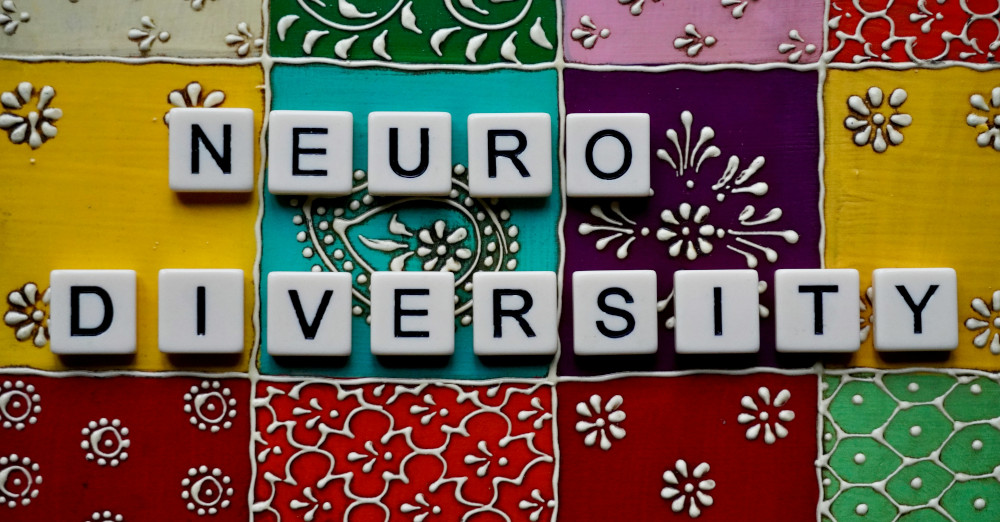
In this extra post, Carolina Borda-Niño-Wildman and Lauren Gillies-Walker explore how clear course structures, Universal Design for Learning, and responsive support services link-up to remove barriers for neurodivergent students at the University of Edinburgh. Together, these three pillars create a cohesive framework that helps every student engage, learn, and succeed. This post was inspired by Carolina’s work on an EDI-funded project reviewing the literature on the experiences of autistic students and those with ADHD and comparing the findings with the Accessible and Inclusive Learning Policy (in 2022/23) at the University of Edinburgh. Carolina and Lauren are both previous and upcoming (respectively) Teaching Fellows at School for Heath in Social Sciences.
Pillar 1 – Clear and inclusive course structures at University of Edinburgh
Course design is an essential factor in supporting neurodivergent students. The amount of input sources, intensity, and the lack of predictability and control can affect how a student learns, communicates, and performs in lectures, group work settings and exams (Tan & Rabuka et al, 2025; Howe, 2022). Likewise, the provision of structure, clear guidelines on assessment activities, marking criteria, and options for hybrid and 1-1 communication with peers and lecturers can positively influence both their learning experiences and sense of belonging (Tan & Rabuka et al, 2025).
In line with their Accessible and Inclusive Learning Policy (2023), the University promotes reasonable adjustments and standard inclusive course design and implementation guidelines to make learning more accessible for disabled students. By recognising the diversity of all students as natural and valuable, the policy aims to make teaching practices more inclusive for everyone. This aligns well with modern understandings of neurodivergence as different ways of experiencing the world, not deficits (Fletcher-Watson & Happé, 2019).
Autistic students and students with ADHD can be supported through schedules of adjustments and 1-1 support offered by the Disability and Learning Support Service (DLSS), which includes time management planning, extra tutoring support for lectures and assessments, as well as flexible timelines for assessment submission.
As verbal communication might not be the first choice of some students, the University’s online Learn Platform and the 365 Microsoft system allow students to communicate through online platforms, emails, and chats. However, there is currently no options for art-based communication, as recommended by Adams et al. (2019) and Hamilton & Petty (2023).
However, we feel there is a big missing piece. The policy doesn’t say clearly explain how staff will be supported to better understand neurodiversity and the unique needs of neurodivergent students. Without this, the inclusive practices might not work as well, limiting opportunities for students who could otherwise flourish. Raising neurodiversity awareness among staff is essential for creating learning environments where all students can thrive. Although specific guidelines for supporting students with Autism and ADHD are yet to be developed, the University offers valuable resources from national organisations, which could serve as a foundation for further improvement. There is clear potential for greater clarity and tailored guidelines to meet the needs of neurodivergent students.
Pillar 2 – Disability and Learning Support Services
The Equality Act 2010 created the Public Sector Equality Duty (PSED) to help public authorities and organisations conducting public functions encourage equality and inclusion in their operation. In compliance with the PSED, the University operates the Disability and Learning Support Service (DLSS). The service supports students in achieving academic potential by removing barriers and building an accessible, inclusive learning environment throughout the university. DLSS assists students in applying for and accessing a disability support allowance, which offers financial assistance for study-related costs due to a disability (UK Government, 2023).
The most developed component of the DLSS is the schedule of reasonable adjustments. A reasonable adjustment is a duty to prevent, through reasonable means, the disadvantage a student might experience because of their disability (Department for Education, 2017). The DLSS develops a schedule of reasonable adjustments that includes adjustments in course materials and assessments, the student’s attendance form, access to assistive technology, and access to academic support.

Pillar 3 – Inclusive Learning Environments and Universal Design for Learning
A key component of this pillar is the creation of inclusive learning environments (ILE), inspired by the Universal Design for Learning (UDL) framework. This approach focuses on addressing students’ learning needs efficiently, regardless of their disability (Griful-Freixenet et al., 2017). The goal is to ensure that all students can effectively engage, represent, and express their knowledge in a meaningful way. Specifically, ILEs are designed to:
- Motivate learning: Engage students effectively to inspire enthusiasm and interest in their studies.
- Support learners to represent knowledge: Help students become knowledgeable and resourceful, providing them with diverse ways to engage with the content.
- Encourage students to act and express knowledge: Foster strategic, goal-oriented learners who can express their knowledge in ways that are personal and meaningful to them (Brown, 2022).
While the University’s Accessible and Inclusive Learning Policy acknowledges the principles of Universal Design for Learning (UDL), the focus of the policy is primarily on reasonable adjustments, which are outlined in broad terms. A review commissioned by the University in 2021 found that while progress has been made, the principles of Inclusive Teaching and Learning in Higher Education have not been fully implemented. The review recommends adding attention to inclusive practices and Universal Design for Learning into the University’s curriculum review to ensure continuous development of policies and practices that meet the diverse needs of all students (Quinn, 2021).
Moving forward: Supporting neurodivergent students in courses
When it comes to supporting neurodivergent students, one of the most important considerations is how their needs are addressed. It is essential to highlight the inter-influence between sensory experiences and course structures. When students feel overwhelmed, their choices often involve shutting down, avoiding meltdowns to prevent social stigma, or leaving, which can ultimately lead to absenteeism and dropout. Addressing students’ sensory needs enhances their wellbeing and ensures that any course structure adjustments will positively affect their academic achievement.
Staff awareness of students’ experiences impacts students’ willingness to disclose their diagnosis and their likelihood of feeling safe, respected, and valued (Bolourian, Zeedyk & Blacher, 2018). It is really important for educators to avoid assuming that their individual sensory experiences are universal and continue basing teaching practices on them. Furthermore, the awareness that teaching staff with lived expertise in Autism and ADHD have, without making the mistake of generalising, can serve as a tool for discussions on refining our teaching practices. Teachers with lived experience can also be positive student role models (Farahar and Foster, 2021).
Although not an aspect mentioned in the literature, the implementation of DLSS should be well-resourced. The increasing demand for support and the low implementation of UDL initiatives means a higher demand for 1-1 support. The review report commissioned by the University of its DLSS concludes that the current staff ratio per student is not enough, and the service is underfunded (Quinn, 2021). Support services need to be clearly advertised and easy to access, with straightforward criteria so students know exactly how to get the help they need—right from the start.
Finally, inclusive teaching works best when students are actively involved in shaping it. The University of Edinburgh’s Accessible and Inclusive Learning Policy makes good progress in supporting all students, in line with the Equality Act 2010. But there’s something missing: students should be directly involved in creating inclusive procedures, environments, and adjustments. Often, adjustments are made for students—but it’s just as important to give them clear, straightforward ways to share their ideas and concerns about neurodiversity and how higher education is organised. After all, the best inclusive practices come from putting the voices of those most affected right at the centre of the conversation.
Final thoughts
The University’s dedication to inclusive adjustments and course design guidelines for neurodivergent students’ is evident through the adoption of the schedule of adjustments and personalised support provided by the DLSS. Still, we argue that there is an opportunity to further enhance and expand the development of fully inclusive learning environments, ensuring all students can thrive to their fullest potential.
Do you have any suggestions on how universities can make their courses more inclusive for neurodivergent students? Let me know in the comments below!
Our second blog post will look at the importance of the sensory environment in Higher Education.
References
Adams, D., Simpson, K., Davies, L., Campbell, C., & Macdonald, L. (2019). Online learning for university students on the autism spectrum: A systematic review and questionnaire study. Australasian Journal of Educational Technology, 35(6), 111–131.
Bolourian, Y., Zeedyk, S. M., & Blacher, J. (2018). Autism and the University Experience: Narratives from Students with Neurodevelopmental Disorders. Journal of Autism and Developmental Disorders, 48(10), 3330–3343.
Department for Education. (2017). Inclusive Teaching and Learning in Higher Education as a Route to Excellence: January 2017.
Farahar, C., & Foster, A. (2021). #AutisticsInAcademia. In N. Brown (Ed.), Lived Experiences of Ableism in Academia: Strategies for Inclusion in Higher Education (pp. 197-216). Bristol University Press. doi:10.46692/9781447354123.016
Griful-Freixenet, J., Struyven, K., Verstichele, M., & Andries, C. (2017). Higher education students with disabilities speaking out: perceived barriers and opportunities of the Universal Design for Learning framework. Disability and Society, 32(10), 1627–1649.
Hamilton, L. G., & Petty, S. (2023). Compassionate pedagogy for neurodiversity in higher education: A conceptual analysis. Frontiers in Psychology, 14(February), 1–9.
Howe, J. (2022). The sensory experiences of autistic students at university. Anglia Ruskin University.
Quinn, P. 2021. Review of Student Disability Service, The University of Edinburgh. Edinburgh: AUA Consulting
UK Government. 2023a. Disabled Students’ Allowance. https://www.gov.uk/disabled-students-allowance-dsa
 Carolina Borda-Niño-Wildman
Carolina Borda-Niño-Wildman
Carolina Borda-Niño-Wildman is Head of Research, Development, and Innovation at the National Health Service for Scotland’s Ayrshire & Arran region. She worked as a Teaching Fellow at the School of Health in Social Sciences between 2022 and 2023. She is a medical anthropologist, political scientist, and Butoh dancer, dedicated to studying the political economy of violence(s), the intersection of gender, class and ethnicity, and identity politics in Latin America and Europe.
 Lauren Gillies-Walker
Lauren Gillies-Walker
Dr Lauren Gillies-Walker is an academic psychologist whose research interests are focused on Neurodiversity, mental health, disabilities, emotion regulation and affective technologies. Her recent work has focused on reducing inequalities within healthcare and creating neuro-inclusive environments for Neurodivergent populations. Lauren is currently a Lecturer in Mental Health at The University of The West of Scotland, however will start a new position as a Teaching Fellow in Health in Social Sciences at The University of Edinburgh in October 2025.



Hello Carolina and Lauren,
I would really welcome a way to proof read handbooks/Learn pages to ensure that they are not only visually, but also linguistically neurodiverse friendly. Is there any way of achieving this?
At the moment words like ‘students are invited to’ are used which are super confusing from ASN students. Involving students with proof reading handbooks/learn pages would be amazing as you also suggest.
Hello Alexia,
Many thanks for your thoughtful comment.
Encouraging students from diverse backgrounds to help refine the visual and written language of handbooks and Learn pages would indeed benefit everyone — including the teachers!
I do wonder, though, how this could work in practice. Would students need some training in feedback processes beforehand? What would they gain personally from the time invested — would it be recognised as work, or as a learning opportunity, or both? And how do we ensure that the range of views gathered really reflects student diversity?
There are certainly aspects, such as the phrasing of sentences, as you suggested, that could be clearer, which would help all students. At the same time, when it comes to the sensory experience of accessing a text — colour, touch, visual design — multiple perspectives are possible. This is exactly what we’ll be exploring further in the next part of this blog series.
I look forward to continuing the conversation and hope you’ll share your thoughts again in the next blog post on this topic.